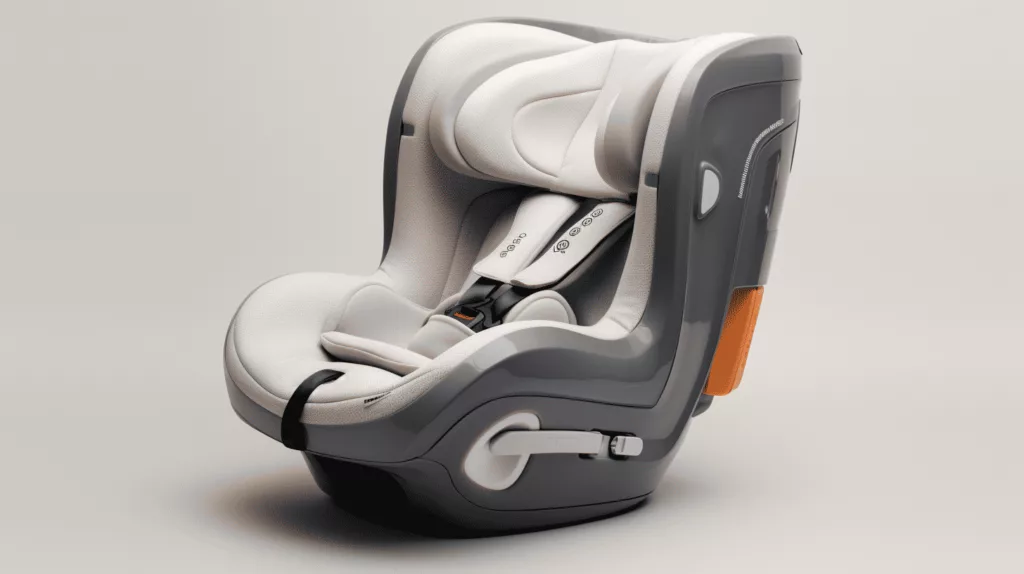
Parenting 101: Avoiding Common Mistakes of 2024
Discover the most common parenting mistakes to avoid in 2024. Get expert tips and guidance to become a better parent and raise happy, healthy children.
The world of parenting comes brimming with a myriad of choices: from deciphering your baby’s cries to selecting the perfect, cosy infant car seat. However, a choice often overlooked – possibly due to the illusions of perpetual newness the idea of babyhood conjures – is understanding the lifespan of an infant’s car seat. Yes, much like your favorite food in the pantry, car seats come with expiration dates too! This article peels back layers of this often neglected aspect. It delves into key questions, calling on trusted industry sources to provide reliable answers. So whether you’re a new parent or a seasoned pro, let’s navigate the waters of car-seat lifespan guidelines together. Buckle up – important insights await.

Car seats- they are a necessary safety measure for our tiny tots on the go, but did you know they come with expiration dates? This topic may seem puzzling, probably something you’ve never pondered over, but delving into it makes perfect sense considering the utmost importance we place on the safety of our little ones. Car seats are designed to protect and shield during an unforeseen accident, but like most products composed of plastic and other materials, they degrade and become less effective over time. In this section, we will explore the predicted lifespan of different types of car seats, helping you understand when it’s time to replace that all-important safety piece.
Infant car seats are designed with the utmost care, sure to safeguard the delicate stature of newborns. Typically, these seats have an estimated lifespan of 6-8 years. Keep in mind; this doesn’t mean the clock starts ticking the moment you purchase the seat. The countdown begins from the manufacturing date. Given the sensitive nature of child safety, manufacturers tend to be on the conservative side when predicting the lifespan of their product, ensuring your child’s protection is not compromised.
Factors explaining the limited lifespan include:
Remember, most manufacturers print expiration dates on a sticker located at the back or bottom of the seat. So, it won’t be difficult to validate this information.
Moving on to car seats for slightly older kids – the toddler seats, and high back boosters – the lifespan increases to 8-10 years. This range is quite standard, although, like infant seats, the specific expiration date can sometimes range from 5 to 12 years, depending on the manufacturer and model.
Just like infant car seats, factors that determine the lifespan of toddler seats and high back boosters encompass material degradation, improvements in technology, and missing or unavailable spare parts and instructions.
Stepping in line with the higher age bracket and increased usage duration, toddler seats and high back boosters are subject to a higher degree of physical wear and tear. Plus, you must consider how seat safety regulations and standards continually evolve over the years, making occasional upgrades necessary.
No magic number applies to all car seats because the lifespan varies based on the factors discussed above. But tuning into this handy piece of info ensures that the seat securing your child is at its maximum effectiveness, guaranteeing optimal safety. So don’t forget to check for those expiration dates!
One of the necessary but often overlooked aspects of car care is the maintenance of the car seats. Unbeknownst to many, car seats aren’t built to last forever. Their durability depends on factors like material degradation, temperature exposure, and evolving safety regulations. Today we’ll take a deep dive into these factors to help you understand when and why you should consider replacing your car seats.
The most prominent factor affecting the lifespan of your car seats is material degradation. Like any other part of the car, the materials used in car seats degrade over time. This is especially true for the covers and padding, which are subjected to constant wear and tear due to daily use. Environmental factors, spills, and even pet damage can speed up this process, leading to increased signs of wear and tear like fading, tearing, and thinning of material.
Going beyond the days of usage, temperature exposure plays a significant role in determining a car seat’s lifespan. Extreme heat or cold can cause the materials in the seat to degrade faster. For instance, in summer months, high heat can cause the seat’s material to dry out and crack, while during the winter, extreme cold can make it stiff and brittle. Therefore, if your car is regularly subjected to extreme temperatures, you might want to check your car seats more frequently.
Last but not least, car seat manufacturers recommend replacing seats after 6-10 years due to evolving safety standards and regulations. These rules can change over time, with new research leading to improved safety measures and designs. Therefore, an older car seat may not provide the same level of protection as a newer model following the latest regulations.
It may be easy to overlook your car seats’ condition, especially when they appear to be in good physical shape. However, understanding these factors can help ensure that your car seats always offer maximum comfort and safety. After all, it’s not just about the aesthetic appeal but also about how it caters to the overall driving experience and safety measures. So, if you haven’t already done it, take some time to inspect your car seats and, when necessary, consider a replacement to uphold your vehicle’s safety standards.
Determining the expiration date of your child’s car seat is a task that may initially appear daunting, but it’s much simpler than you might think. One of the most important reasons to ensure your child’s car seat is within its longevity period is because an expired car seat may not provide adequate protection during a crash, heightening the risk substantially.
Typically, a car seat will come with an expiry date conveniently labelled somewhere on the seat. This is usually found on the underside or at the back, depending on the manufacturer’s preference. It’s also worth noting that this expiration date is often presented in a month and year format, avoiding any confusion.
However, what happens if you can’t locate the expiry label? Or maybe it has worn out, rendering it illegible? In such instances, the owner’s manual can come in incredibly handy. The manual often contains information on how long the seat should typically last. If you’ve misplaced your manual, remember that most manufacturing companies have digital versions available on their websites.
So, why exactly does a car seat expire in the first place? These products are made of multiple materials that can wear and degrade over time, impacting their effectiveness. Sunlight exposure, changing temperature conditions, and frequent use can all stress the plastic components, weakening them.
Furthermore, over the years, safety standards and technologies evolve. The seat you’re using today might be missing out on key safety features that manufacturers have included in their more recent models.
To sum it up, ensuring that your child’s car seat hasn’t expired is an imperative step in ensuring maximum safety while on the road. It’s not simply about following manufacturer guidelines but about securing the welfare of your child. Therefore, always keep an eye on the expiration date, refer to your owner’s manual if required, and consider investing in a new car seat if the current one is expired or nearing its expiration date.
As parents or caregivers, it’s instinctual to want to provide the best for the children under our responsibility. This includes ensuring their safety during those road trips to the playground, mall, or grandma’s house. Particularly in understanding and respecting car seat expiration dates, we can better protect what we hold most dear.
Why are these expiration dates so crucial, you might ask? That’s a fantastic question!
These expiration dates serve as more than just manufacturer guidelines or suggestions; they mark the expected end of a product’s “useful life.” Often, the materials used in car seats, like plastic and metal, begin to degrade and wear out over time. This gradual degradation can compromise the car seat’s integrity and safety functionality, potentially placing a child’s life at risk in the event of an accident.
But remember, the degradation isn’t just physical. Safety standards for car seats are also always evolving. As research and technology advance, newer models are designed with updated safety features that may not be present in older models. Using expired seats means potentially forgoing the advantages of recent advancements in child safety.
Let’s delve a little deeper:
“The guardian of a child’s safety is their vigilant caregiver. Your heed to expiration dates on car seats can become a signpost on the journey of your child’s safety.”
By paying attention to the expiration dates on car seats, we as caregivers can effectively protect our children’s lives. This simple date is a compass pointing towards safer driving destinations. Therefore, it is crucial to prioritize the latest and trustworthy infant car seat for our young passengers.
The lifespan of an infant car seat varies by manufacturer, but it usually ranges from 6 to 10 years. It is essential to check the specific guidelines provided by the manufacturer for your car seat model.
It is generally not recommended to use a second-hand infant car seat unless you can ensure that it has never been involved in an accident, is within the expiration date, and has all the necessary parts and instructions intact. It is better to purchase a new car seat to ensure its safety and reliability.
Several factors can affect the lifespan of an infant car seat, including the quality of materials used, the frequency of use, exposure to extreme temperatures, and any involvement in accidents. It is essential to follow the manufacturer’s guidelines for proper care and maintenance.
It is recommended to replace an infant car seat in the following situations: if it has reached its expiration date, if it has been involved in a moderate to severe accident, if there are visible signs of damage or wear and tear, or if it no longer meets the safety standards set by the manufacturer or regulatory authorities.
It is not advisable to use an expired infant car seat, even in an emergency, as it may not provide the necessary level of safety and protection. It is always better to have a properly functioning and up-to-date car seat for your child’s safety.
Be the first to See our Posts and latest Guides, and Special Offers like Lovelycheeks on Facebook or follow us on Pinterest!

Discover the most common parenting mistakes to avoid in 2024. Get expert tips and guidance to become a better parent and raise happy, healthy children.

Embark on a musical journey with your toddlers as you explore different musical instruments. Discover the joy of music and foster their creativity.

Engage your toddlers in exciting water play activities for sunny days. Discover fun and safe ways to make a splash and create lasting memories.

Discover the future of parenting with the evolution of baby monitors. Explore how new technologies are revolutionizing baby monitoring for modern parents.